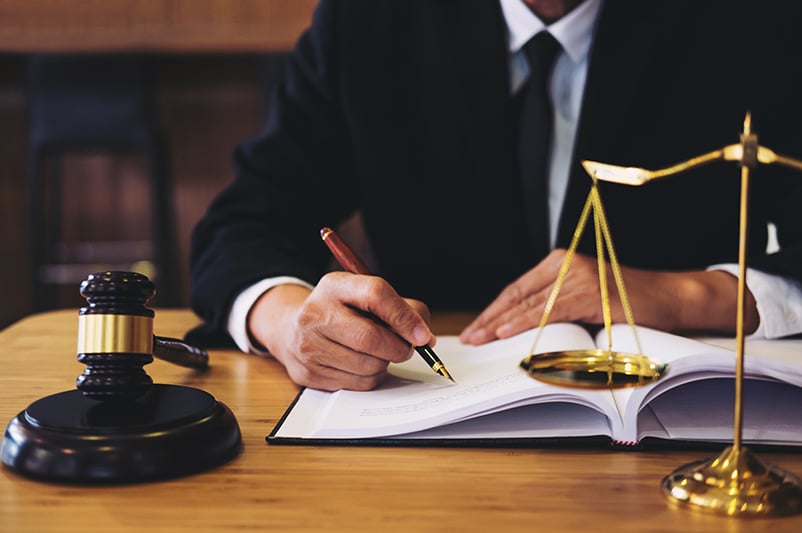Litigation is a term often heard when speaking with legal professionals or even while watching some movies or TV shows. The word “litigation” is usually confused with the similar term “lawsuit.” They are both related but are not to be used interchangeably.
The fact is litigation is a fundamental process in resolving any legal dispute. And it mainly takes place before either party even enters the courtroom.
So, what does litigation mean in law? Continue reading as we discuss exactly what litigation is, why it is essential, and the crucial stages you should expect.
What Is Litigation
Litigation, meaning “dispute” (litigatio in Latin), is a law concept used to describe the process of enforcing or defending an entity’s legal rights.
It is a contested action usually made in front of a judge between two opposing sides. The one whose right has been violated, the accuser, is legally referred to as the plaintiff. In contrast, the other who is accused of violating the plaintiff’s legal rights is called the defendant.
Legal litigation is a general term that involves a wide variety of legal actions and activities. It includes pre-negotiations such as requesting the approval of legal letters in hopes of settling the case to avoid trial. Litigation processing also involves:
- Court hearings
- Arbitrations
- Issuance of restraining orders
- Temporary custody orders
Litigation is usually resolved in a court trial where a judge makes the final decision. Court appeals are also a part of litigation proceedings. Although, settlement can happen anytime during litigation and is often completed before a full trial begins.
Litigation vs Lawsuit
Many use litigation and lawsuit interchangeably. But this isn’t entirely accurate as they have two separate meanings. In a nutshell, a litigation’s definition is the process used to resolve a lawsuit.
Whereas, a lawsuit is a specific legal action wherein the plaintiff files a complaint with the court.
To put it into perspective, litigation is the series of steps before, during, and after a lawsuit is filed. Before meaning, a pre-lawsuit litigation. This involves studying the case and sending demand letters to the defendant. Then the defendant is given time to respond. During litigation, the defendant is served a summons or complaint that requires legal action, a lawsuit. Afterwards, litigation typically ends with a verdict, the result of a court case, in which a judge orders compensation.
It is important to know that even after a lawsuit is resolved, the litigation process can continue. For example, one party is left dissatisfied with the resolution of the case. In this scenario, they can file for an appeal or negotiation with a higher court. This causes the litigation to resume.
Litigation Elements
Most litigations involve four distinct elements or phases.
First is the Discovery phase. The legal discovery process is where the plaintiff and defendant gather evidence to support their case. It consists of sending the other party a written request to explain their side. It also requires reviewing documents, paperwork, and related incidents in the past.
During this process, it is essential to maximize time, accuracy, and organization. An electronic document system like Digital WarRoom’s eDiscovery can help speed the process up for law professionals and firms. Legal professionals prefer to use this technology to review, manage, and compare electronic paperwork in an efficient and effective manner.
The next phase is filing a Motion. Sometimes, either party is not willing or able to enter into a settlement. Because of that, one might submit a formal request, a motion, to take the case into court.
The third element is gathering Expert Witnesses. Here, subject matter experts act as witnesses to help support legal claims. It usually includes credible professionals like private investigators, doctors, and accountants.
The last element is the Trial. During this phase, all evidence and facts are presented before a jury and judge. They will ultimately resolve the case with a final verdict.
Post-Trial Litigations
Contrary to what most people think, litigation doesn’t end when a decision is given by a judge. Either party still has many legal options in regards to moving forward. This can extend the litigation process. As long as there is a dispute between the plaintiff and defendant, they will still both be in litigation.
This is common for cases that involve a division of assets or custody hearings.
The bottom line is that litigation can be as quick or as drawn out as the circumstances, or the parties, dictate.
Litigation Made Easy with Digital WarRoom
When dealing with litigation, preparation is vital. Having the right knowledge and evidence is the foundation for legal success. In the modern age, eDiscovery is increasingly vital to that success.
The Digital WarRoom eDiscovery software system is key to collecting the documents necessary to best present your case. As mentioned before, the legal process can be short or long. However much time it takes, you can rest-assure that it will not be spent in the discovery phase. Contact us to schedule a demo today and learn about document review software.
-1.png?width=400&height=164&name=DWRLogoClassic%20-%20Copy%20(2)-1.png)









Comment On This Article